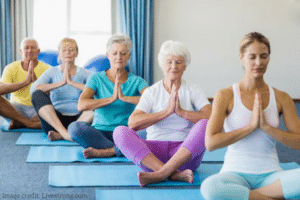
ALS (amyotrophic lateral sclerosis) affects an individual’s capacity to move. It is a progressive neurodegenerative ailment that deteriorates the nerve cells in the spinal cord and brain. It disturbs the voluntary control of the legs and arms and causes issues with breathing.
Almost 30,000 people in the United States suffer from ALS. That said, more than 5,000 patients receive a diagnosis of this disease every year. However, each person suffering from ALS will face a different predicament than others, and that will determine the care required to ensure that the patient lives well.
Several initiatives have been undertaken to provide the correct care and treatment for ALS. For instance, in August 2023, there was a fundraising event in Lexington named the “Walk to Defeat ALS” by ‘The ALS Association.’ This initiative aimed to defeat ALS and offer hope to patients and their families through access to proper care, support groups, and awareness about the illness.
Taking care of an ALS patient is a challenging task. Today, most families in Lexington opt for home care by partnering with an agency. In this article, we will shed light on why home care can be the ideal option for senior citizens suffering from ALS.
Home Care for Older ALS Patients: Reasons to Opt for This Option
Typically, ALS is diagnosed in people between 40 and 60 years old. The condition worsens over time and makes a patient wheelchair-bound. That means they are dependent on others to carry out their daily tasks.
The 2022 Senior Living Report compiled by Caring identifies Lexington as the best location for seniors to retire and live. Here, the cost of living is low, and funds for retirees are boosted because there is no state income tax applied to Social Security benefits.
However, for senior citizens suffering from ALS, it is necessary to explore options for home care in Lexington. The 2021 Genworth Cost of Care Survey states that home care expenses in the city are approximately $4,957 per month.
Is an older adult in your family suffering from ALS? Here are some ways in which an agency that provides home care can be useful:
No Compromise in the Patient’s Comfort Zone
When you choose in-home care for an older adult suffering from ALS, you have less to worry about. As individuals age, their capacity to adapt to new environments diminishes. In-home care services allow senior citizens to remain amidst familiar sounds, sights, and people that create their comfort zone. This results in better clinical outcomes for patients.
Family support and participation, along with caregiving by skilled professionals, help address the emotional and social needs of senior ALS patients. They feel more at ease in their homes compared to a nursing home or any other healthcare facility. In-home care has enabled several patients to continue working while staying within the comfort of their surroundings.
One can draw inspiration from Andy Miller, an ALS patient who chose in-home care. For several years, Andy worked as an aviation engineer from home. As his symptoms deteriorated, he found it easier to cope with home care services and use his home office setup to deliver his best.
Access to Skilled Professionals
An in-home care agency ensures that patients are in good hands. If there is an in-home nurse at work, instances of second-guessing and calls to a physician can be avoided.
Family members always try their best to care for ALS patients, but unfortunately, they lack medical training. This limitation becomes apparent when they need to manage older adults experiencing bouts of persistent fatigue, a symptom of the disease.
Another pertinent symptom of ALS is unmanageable periods of crying or laughing. In August 2023, ALS News Today reported that brain MRI scans of ALS patients reveal that they aren’t able to regulate their emotional expressions because of changes in the brain’s frontal area.
If this symptom persists, it can be challenging to provide proper care to the senior citizen at home. In-home care nurses and professionals understand the medical reasons behind this and other ALS symptoms and are equipped to manage it well. They employ appropriate control tactics to ensure that the behavioral extremes subside and the patient regains balance.
Always Best Care Senior Services maintains that it is essential for home-care service professionals to exercise compassion to provide the best care to patients. The leading providers in this field make sure to train their home care professionals thoroughly. This training helps them deliver the required care and ensures that patients can lead dignified and independent lifestyles.
Access to Customized Care for the Patient
Often, people think that in-home care is uniform for everyone. The home care agency and clinical team can discuss and help you choose the type of care an older adult with ALS needs. For instance, for one patient, a round-the-clock home care nurse could be necessary to help with their daily tasks.
The requirement for home care can change based on the patient’s health improvement or deterioration. Families can select whether they need short-term or long-term care or skilled and unskilled care. Before finalizing your choice of a home care nurse, you can speak with them and ask relevant questions to ensure that you are making the correct decision.
Conclusion
Senior citizens who are suffering from ALS should consider leveraging home care services. Today, reputable in-home care agencies provide customized assistance and compassionate staff with the correct expertise to attend to older adults and address their symptoms and health changes. This not only reduces the stress on family members but also improves the overall quality of life for the elderly patient.
However, it is essential to speak with the home care nurse or professional to determine whether their expertise and the level of care you need align well. It will help families make informed decisions and ensure better clinical outcomes.








